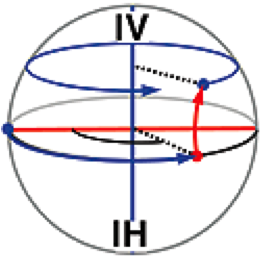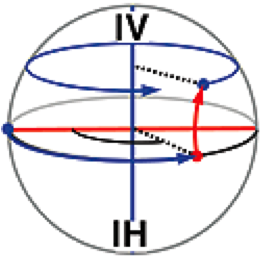Rotating the spin of an exciton
Many of the approaches taken with the aim of achieving quantum information processing involve manipulating spins in semiconductor quantum dots. The spins in question belong to electrons confined in the dot, which are probed and controlled by optical or electromagnetic means. An intriguing alternative possibility is manipulating other spinful entities, like an electron-hole pair (exciton), created by illuminating the dot with laser light.
In a paper published in Physical Review Letters, Eilon Poem and collaborators from the Technion in Israel, demonstrate the first rotation of the spin of a confined exciton by a single laser pulse. Despite the short (about a nanosecond) lifetime of the exciton, a property which makes its manipulation quite challenging, many spin operations are, in principle, possible with the use of suitably short (picosecond long) laser pulses. It is too early to tell if this development will have the same appeal as the manipulation of electron spins in these devices. While both methods are conceptually similar, there is yet a fundamental difference between them. While the polarization of light can be fully converted into an exciton spin polarization, it cannot be fully converted into electron spin polarization. – Alex Klironomos





